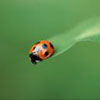Про школу
Модераторы: МИА, Елизавета Юрьевна, Славяна
- Амаридж
- Хозяйка Муми Дола
- Сообщения: 578
- Зарегистрирован: Вт 02 ноя 2010, 22:13
- Откуда: Москва
Re: Про школу
Ну вот, и у нас началось.
Не хочу в школу, там скучно, долго, надоело, не нравится.
Адаптация?
В мою голову приходят крамольные мысли прогуливать раз в неделю.
Муж категорически против.
Не хочу в школу, там скучно, долго, надоело, не нравится.
Адаптация?
В мою голову приходят крамольные мысли прогуливать раз в неделю.
Муж категорически против.
Юля
-

Вприсядку - Королева Муми-Дола
- Сообщения: 1351
- Зарегистрирован: Пт 24 июл 2009, 01:13
- Откуда: Новосибирск, академгородок
Re: Про школу
ИМХО, прогуливать в первые месяцы - святое дело.
Продолби в сердце лед -
И вперед -
под мостом, как Чкалов.
__________
Сын - 12 лет, дочь - 8лет, дочь - 7 лет
__________
лытдыбр: http://vprisjadku.livejournal.com
И вперед -
под мостом, как Чкалов.
__________
Сын - 12 лет, дочь - 8лет, дочь - 7 лет
__________
лытдыбр: http://vprisjadku.livejournal.com
-

Диез - Богиня Муми-Дола
- Сообщения: 11639
- Зарегистрирован: Чт 23 июл 2009, 00:48
- Откуда: Москва
Re: Про школу
А мне кажется именно в первые месяцы нужно проявить стойкость, а там дальше можно и послабления делать. Я какая-то анти педагогическая мама, мне вот уроки его пофиг, главное чтобы сделал, а чо он там наделал - его дело и училки  , но вроде всё аккуратненько на мой взгляд. Ну и раскраски его тоже помогаю делать, так как толку в них не вижу, мы с Томом и так рисуем много и по Бюхи стараюсь какие-то упражнения давать ненавязчиво, ритмы на бумаге рисуем, стихи ритмическим рисунком. А еще на закорючки в прорисях прибумываем ритмические рифмы, соответствующие движениям руки - вверх-вниз. Я помню в музыкалке мне задания препод давал подобрать стихотворение под музыкальное произведение или самой рифму придумывать, прикольно было. И учить не скушно.
, но вроде всё аккуратненько на мой взгляд. Ну и раскраски его тоже помогаю делать, так как толку в них не вижу, мы с Томом и так рисуем много и по Бюхи стараюсь какие-то упражнения давать ненавязчиво, ритмы на бумаге рисуем, стихи ритмическим рисунком. А еще на закорючки в прорисях прибумываем ритмические рифмы, соответствующие движениям руки - вверх-вниз. Я помню в музыкалке мне задания препод давал подобрать стихотворение под музыкальное произведение или самой рифму придумывать, прикольно было. И учить не скушно.
 , но вроде всё аккуратненько на мой взгляд. Ну и раскраски его тоже помогаю делать, так как толку в них не вижу, мы с Томом и так рисуем много и по Бюхи стараюсь какие-то упражнения давать ненавязчиво, ритмы на бумаге рисуем, стихи ритмическим рисунком. А еще на закорючки в прорисях прибумываем ритмические рифмы, соответствующие движениям руки - вверх-вниз. Я помню в музыкалке мне задания препод давал подобрать стихотворение под музыкальное произведение или самой рифму придумывать, прикольно было. И учить не скушно.
, но вроде всё аккуратненько на мой взгляд. Ну и раскраски его тоже помогаю делать, так как толку в них не вижу, мы с Томом и так рисуем много и по Бюхи стараюсь какие-то упражнения давать ненавязчиво, ритмы на бумаге рисуем, стихи ритмическим рисунком. А еще на закорючки в прорисях прибумываем ритмические рифмы, соответствующие движениям руки - вверх-вниз. Я помню в музыкалке мне задания препод давал подобрать стихотворение под музыкальное произведение или самой рифму придумывать, прикольно было. И учить не скушно.Лучше быть хорошим человеком, ругающимся матом, чем тихой, воспитанной тварью…
Летом грохнулся телефон с утратой контактов. Девушки, покидайте свои телефоны в личку, с кем созванивалась и общаюсь не только на форуме.
Летом грохнулся телефон с утратой контактов. Девушки, покидайте свои телефоны в личку, с кем созванивалась и общаюсь не только на форуме.
-

Сахарок (Лана) - Богиня Муми-Дола
- Сообщения: 3642
- Зарегистрирован: Чт 23 июл 2009, 15:11
- Откуда: Воронеж
Re: Про школу
Женик нормально стал ходить. Без слез.
Ир, а я даже не знаю что они там пишут. Женик садится и сам делает.
Ир, а я даже не знаю что они там пишут. Женик садится и сам делает.
Доча Катя 01.10.93
Сына Женя 31.03.04
Сынок Ванилька 25.04.08
Если я тебе не нравлюсь - застрелись, я не исправлюсь.
"Я люблю поспорить, когда дело идет о различии мнений, но при различии духа спор невозможен и лучше молчать". иг. Арсения( Себрякова)
Сына Женя 31.03.04
Сынок Ванилька 25.04.08
Если я тебе не нравлюсь - застрелись, я не исправлюсь.
"Я люблю поспорить, когда дело идет о различии мнений, но при различии духа спор невозможен и лучше молчать". иг. Арсения( Себрякова)
-

Елизавета Юрьевна - Богиня Муми-Дола
- Сообщения: 38022
- Зарегистрирован: Пт 28 авг 2009, 19:41
- Откуда: Зеленоград
Re: Про школу
А мой болеет уже. Никуда не ходит. Разлагаются на пару с папой)
-

Муми Мама - Королева Муми-Дола
- Сообщения: 2829
- Зарегистрирован: Ср 22 июл 2009, 20:59
Re: Про школу
С почином вас!  Чую, что и мы - на взлете. Уже носы сопливые у двоих. А до 1 сентября - все в порядке было.
Чую, что и мы - на взлете. Уже носы сопливые у двоих. А до 1 сентября - все в порядке было. 
 Чую, что и мы - на взлете. Уже носы сопливые у двоих. А до 1 сентября - все в порядке было.
Чую, что и мы - на взлете. Уже носы сопливые у двоих. А до 1 сентября - все в порядке было. 
Люди, если не лениво, кликайте время от времени: http://laxvenom.myminicity.com Мы там городишко строим....
Никита - 16 лет, Артём - 12, Олюнька - 9, Глебаныч - 5.
" Все пути бессмысленны, абсолютно все!!! Но есть единственный путь - путь сердца. Он такой же бессмысленный как и все остальные, но по нему идешь с радостью!" К.Кастанеда
"Никогда ни с кем не спорь о вере. Не надо. Потому что никому ничего не докажешь, а сам только расстроишься. Не спорь." Амвросий Оптинский
Никита - 16 лет, Артём - 12, Олюнька - 9, Глебаныч - 5.
" Все пути бессмысленны, абсолютно все!!! Но есть единственный путь - путь сердца. Он такой же бессмысленный как и все остальные, но по нему идешь с радостью!" К.Кастанеда
"Никогда ни с кем не спорь о вере. Не надо. Потому что никому ничего не докажешь, а сам только расстроишься. Не спорь." Амвросий Оптинский
-

IrenaF - Богиня Муми-Дола
- Сообщения: 12554
- Зарегистрирован: Ср 22 июл 2009, 20:36
- Откуда: Greater Toronto Area, Ontario, Canada
Re: Про школу
У нас вообще никаких домашних заданий пока  И я поняла, учебы тоже пока нет особой, так, обьясняют как надо себя вести в разных ситуациях, показывают какие-то образовательные фильмы. Дочке в школе нравится
И я поняла, учебы тоже пока нет особой, так, обьясняют как надо себя вести в разных ситуациях, показывают какие-то образовательные фильмы. Дочке в школе нравится 
 И я поняла, учебы тоже пока нет особой, так, обьясняют как надо себя вести в разных ситуациях, показывают какие-то образовательные фильмы. Дочке в школе нравится
И я поняла, учебы тоже пока нет особой, так, обьясняют как надо себя вести в разных ситуациях, показывают какие-то образовательные фильмы. Дочке в школе нравится 
Выражаю исключительно личное мнение , которое может поменяться завтра, и не претендую на истину ни в какой инстанции.
сын 14, дочка 8 лет
Я отвечаю за то что говорю но не отвечаю за то что вы слышите!
сын 14, дочка 8 лет
Я отвечаю за то что говорю но не отвечаю за то что вы слышите!
-

IrenaF - Богиня Муми-Дола
- Сообщения: 12554
- Зарегистрирован: Ср 22 июл 2009, 20:36
- Откуда: Greater Toronto Area, Ontario, Canada
Re: Про школу
Да, они еще будут учиться через какую-то систему "tribes", "племена", посмотрела - типа новая методика обучения изобретенная Jeanne Gibbs для обучения в 21 веке  http://www.youtube.com/watch?v=SyQerR4btc4 Типа учиться небольшими группами, учиться самим искать информацию, упор не на что учат, а как учат, как общаются между собой и т.п. В общем, будем наблюдать что это.
http://www.youtube.com/watch?v=SyQerR4btc4 Типа учиться небольшими группами, учиться самим искать информацию, упор не на что учат, а как учат, как общаются между собой и т.п. В общем, будем наблюдать что это.
 http://www.youtube.com/watch?v=SyQerR4btc4 Типа учиться небольшими группами, учиться самим искать информацию, упор не на что учат, а как учат, как общаются между собой и т.п. В общем, будем наблюдать что это.
http://www.youtube.com/watch?v=SyQerR4btc4 Типа учиться небольшими группами, учиться самим искать информацию, упор не на что учат, а как учат, как общаются между собой и т.п. В общем, будем наблюдать что это.Выражаю исключительно личное мнение , которое может поменяться завтра, и не претендую на истину ни в какой инстанции.
сын 14, дочка 8 лет
Я отвечаю за то что говорю но не отвечаю за то что вы слышите!
сын 14, дочка 8 лет
Я отвечаю за то что говорю но не отвечаю за то что вы слышите!
-

Настя) - Богиня Муми-Дола
- Сообщения: 5278
- Зарегистрирован: Вт 11 авг 2009, 13:16
- Откуда: Таиланд, Самуи, Бопут
Re: Про школу
IrenaF
Звучит очень интересно!
Звучит очень интересно!
-

IrenaF - Богиня Муми-Дола
- Сообщения: 12554
- Зарегистрирован: Ср 22 июл 2009, 20:36
- Откуда: Greater Toronto Area, Ontario, Canada
Re: Про школу
Вот, нашла информацию про этот метод:
The approach involves all of the groups mentioned above in long-term membership in mini-communities (groups of 4-6 members); parents in classroom groups, teachers in faculty groups and students in cooperative learning tribes. The structure provides inclusion, a sense of value and community for everyone in the groups. The communities learn and use a series of collaborative skills and help each other honor four positive agreements: attentive listening, appreciation/ no put-downs, the right to participate or to pass and mutual respect. The positive agreements (norms) assure appreciation for each person’s culture, race, gender, abilities, contributions and uniqueness. The sense of community that all age groups seem to seek today becomes a reality as people work together on meaningful goals, tasks and challenges. Strength evolves out of the special quality time that is spent to build inclusion whenever the groups come together. No one is an isolate, no one fears to talk. It is safe enough to ask questions – safe enough to learn. Every active learning academic experience (lesson) in a Tribes classroom has two objectives: the content to be learned and the social skill to be practiced. Each lesson begins with the teacher announcing the objectives to the students and each learning experience concludes with student groups reflecting on or assessing the extent to which they achieved the objectives while working together. Comprehensive studies repeatedly have proven that cooperative group learning and the reflective practice improves student active learning. It is compatible with how the human brain constructs, processes and retains information for extended periods of time.
If indeed we want to improve academic test scores, teachers need to learn how to transfer leadership and individual accountability to peer groups. Studies have shown that group interdependence consistently increases student achievement more than individual control methods.11 The inclusion and safety within caring groups takes peer leadership and responsibility to exciting new levels for children and youth learning and development. Educator Ron Miller reminds us that ultimately our work is not about a curriculum or a teaching method… it is about nurturing the human spirit with love. The many problems of youth can be lessened and healed by transforming schools into caring communities, by including youth as leaders in solving problems and in reaching out in kindness to each other.
I believe that John Dewey was right. Each public school should be a model home, a complete community actively developing future compassionate citizens capable of creating, leading and contributing to the kind of democratic communities – in which we all long to live.
Мне кажется что сын тоже так учился в первых классах, только они это tribes не называли вроде Их делили всех на группы в 4 человека и они работали вместе. Сын поначалу жаловался что один тормозит всю группу, другой отвлекается, мы дома это все обсуждали периодически, а потом он научился взаимодействовать с тем "тормозом", организовал группу так чтоб по-максимуму эффективно работали
Их делили всех на группы в 4 человека и они работали вместе. Сын поначалу жаловался что один тормозит всю группу, другой отвлекается, мы дома это все обсуждали периодически, а потом он научился взаимодействовать с тем "тормозом", организовал группу так чтоб по-максимуму эффективно работали  До сих кстати пор дружит с ним, хоть давно в другой школе
До сих кстати пор дружит с ним, хоть давно в другой школе  Ну в общем, здесь первые классы на этом построены - не так учеба, как вот это взаимодействие
Ну в общем, здесь первые классы на этом построены - не так учеба, как вот это взаимодействие  Кстати в конце полугодия отмечают все это, как ребенок себя ведет с соучениками, помогает им, проявляет инициативу, просит помощи у других и т.п. На сайте этого подхода написано что дети сейчас все могут сами найти ответ на любой вопрос на интернете сами, и им просто слушать учителя неинтересно, а интересно самим изучать все , вот стараются организовать их так чтоб они в компании это делали, чтоб не сидел каждый со своим лептопом поодиночке
Кстати в конце полугодия отмечают все это, как ребенок себя ведет с соучениками, помогает им, проявляет инициативу, просит помощи у других и т.п. На сайте этого подхода написано что дети сейчас все могут сами найти ответ на любой вопрос на интернете сами, и им просто слушать учителя неинтересно, а интересно самим изучать все , вот стараются организовать их так чтоб они в компании это делали, чтоб не сидел каждый со своим лептопом поодиночке  То есть учитель дает задание а ученики всей группой изучают/решают и потом обсуждают то что узнали-выучили-решили для закрепления материала. Поэтому поощряются дискуссии между учениками , обсуждения и т.п. В классах соответственно парты стоят по 4 рядом, где дети сидят друг другу лицом.
То есть учитель дает задание а ученики всей группой изучают/решают и потом обсуждают то что узнали-выучили-решили для закрепления материала. Поэтому поощряются дискуссии между учениками , обсуждения и т.п. В классах соответственно парты стоят по 4 рядом, где дети сидят друг другу лицом.
The approach involves all of the groups mentioned above in long-term membership in mini-communities (groups of 4-6 members); parents in classroom groups, teachers in faculty groups and students in cooperative learning tribes. The structure provides inclusion, a sense of value and community for everyone in the groups. The communities learn and use a series of collaborative skills and help each other honor four positive agreements: attentive listening, appreciation/ no put-downs, the right to participate or to pass and mutual respect. The positive agreements (norms) assure appreciation for each person’s culture, race, gender, abilities, contributions and uniqueness. The sense of community that all age groups seem to seek today becomes a reality as people work together on meaningful goals, tasks and challenges. Strength evolves out of the special quality time that is spent to build inclusion whenever the groups come together. No one is an isolate, no one fears to talk. It is safe enough to ask questions – safe enough to learn. Every active learning academic experience (lesson) in a Tribes classroom has two objectives: the content to be learned and the social skill to be practiced. Each lesson begins with the teacher announcing the objectives to the students and each learning experience concludes with student groups reflecting on or assessing the extent to which they achieved the objectives while working together. Comprehensive studies repeatedly have proven that cooperative group learning and the reflective practice improves student active learning. It is compatible with how the human brain constructs, processes and retains information for extended periods of time.
If indeed we want to improve academic test scores, teachers need to learn how to transfer leadership and individual accountability to peer groups. Studies have shown that group interdependence consistently increases student achievement more than individual control methods.11 The inclusion and safety within caring groups takes peer leadership and responsibility to exciting new levels for children and youth learning and development. Educator Ron Miller reminds us that ultimately our work is not about a curriculum or a teaching method… it is about nurturing the human spirit with love. The many problems of youth can be lessened and healed by transforming schools into caring communities, by including youth as leaders in solving problems and in reaching out in kindness to each other.
I believe that John Dewey was right. Each public school should be a model home, a complete community actively developing future compassionate citizens capable of creating, leading and contributing to the kind of democratic communities – in which we all long to live.
Мне кажется что сын тоже так учился в первых классах, только они это tribes не называли вроде
 Их делили всех на группы в 4 человека и они работали вместе. Сын поначалу жаловался что один тормозит всю группу, другой отвлекается, мы дома это все обсуждали периодически, а потом он научился взаимодействовать с тем "тормозом", организовал группу так чтоб по-максимуму эффективно работали
Их делили всех на группы в 4 человека и они работали вместе. Сын поначалу жаловался что один тормозит всю группу, другой отвлекается, мы дома это все обсуждали периодически, а потом он научился взаимодействовать с тем "тормозом", организовал группу так чтоб по-максимуму эффективно работали  До сих кстати пор дружит с ним, хоть давно в другой школе
До сих кстати пор дружит с ним, хоть давно в другой школе  Ну в общем, здесь первые классы на этом построены - не так учеба, как вот это взаимодействие
Ну в общем, здесь первые классы на этом построены - не так учеба, как вот это взаимодействие  Кстати в конце полугодия отмечают все это, как ребенок себя ведет с соучениками, помогает им, проявляет инициативу, просит помощи у других и т.п. На сайте этого подхода написано что дети сейчас все могут сами найти ответ на любой вопрос на интернете сами, и им просто слушать учителя неинтересно, а интересно самим изучать все , вот стараются организовать их так чтоб они в компании это делали, чтоб не сидел каждый со своим лептопом поодиночке
Кстати в конце полугодия отмечают все это, как ребенок себя ведет с соучениками, помогает им, проявляет инициативу, просит помощи у других и т.п. На сайте этого подхода написано что дети сейчас все могут сами найти ответ на любой вопрос на интернете сами, и им просто слушать учителя неинтересно, а интересно самим изучать все , вот стараются организовать их так чтоб они в компании это делали, чтоб не сидел каждый со своим лептопом поодиночке  То есть учитель дает задание а ученики всей группой изучают/решают и потом обсуждают то что узнали-выучили-решили для закрепления материала. Поэтому поощряются дискуссии между учениками , обсуждения и т.п. В классах соответственно парты стоят по 4 рядом, где дети сидят друг другу лицом.
То есть учитель дает задание а ученики всей группой изучают/решают и потом обсуждают то что узнали-выучили-решили для закрепления материала. Поэтому поощряются дискуссии между учениками , обсуждения и т.п. В классах соответственно парты стоят по 4 рядом, где дети сидят друг другу лицом.Выражаю исключительно личное мнение , которое может поменяться завтра, и не претендую на истину ни в какой инстанции.
сын 14, дочка 8 лет
Я отвечаю за то что говорю но не отвечаю за то что вы слышите!
сын 14, дочка 8 лет
Я отвечаю за то что говорю но не отвечаю за то что вы слышите!
- bess
- Хозяйка Муми Дола
- Сообщения: 550
- Зарегистрирован: Чт 23 июл 2009, 21:19
- Откуда: Москва, Мосфильмовская
Re: Про школу
Вот примерно как Ирена описывает, у нас эти первые две недели - класс поделили на группы, работа в группах, парты сдвоены и так далее. Завтра так последний день ) Выдадут прописи и учебники и с четверга начнется все как обычно бывает )
У нас тоже по пол-класса ходит, и те в соплях ) Мы уже два дня дома )
У нас тоже по пол-класса ходит, и те в соплях ) Мы уже два дня дома )
Мишка родился 25 ноября 2004 года
Антошик родился 22 января 2010 года
Антошик родился 22 января 2010 года
-

IrenaF - Богиня Муми-Дола
- Сообщения: 12554
- Зарегистрирован: Ср 22 июл 2009, 20:36
- Откуда: Greater Toronto Area, Ontario, Canada
Re: Про школу
bess писал(а):Завтра так последний день ) Выдадут прописи и учебники и с четверга начнется все как обычно бывает )
А почему? У нас так первые несколько классов .
Выражаю исключительно личное мнение , которое может поменяться завтра, и не претендую на истину ни в какой инстанции.
сын 14, дочка 8 лет
Я отвечаю за то что говорю но не отвечаю за то что вы слышите!
сын 14, дочка 8 лет
Я отвечаю за то что говорю но не отвечаю за то что вы слышите!
- bess
- Хозяйка Муми Дола
- Сообщения: 550
- Зарегистрирован: Чт 23 июл 2009, 21:19
- Откуда: Москва, Мосфильмовская
Re: Про школу
Не знаю ) У них реформы все время. И эти две недели для учителей неожиданностью были.
Мишка родился 25 ноября 2004 года
Антошик родился 22 января 2010 года
Антошик родился 22 января 2010 года
-

IrenaF - Богиня Муми-Дола
- Сообщения: 12554
- Зарегистрирован: Ср 22 июл 2009, 20:36
- Откуда: Greater Toronto Area, Ontario, Canada
Re: Про школу
bess писал(а):И эти две недели для учителей неожиданностью были.
Учителя должны уметь так учить, я поняла что нужно специальные курсы этого метода заканчивать, знать как детей организовывать и т.п.
Выражаю исключительно личное мнение , которое может поменяться завтра, и не претендую на истину ни в какой инстанции.
сын 14, дочка 8 лет
Я отвечаю за то что говорю но не отвечаю за то что вы слышите!
сын 14, дочка 8 лет
Я отвечаю за то что говорю но не отвечаю за то что вы слышите!
-

Настя) - Богиня Муми-Дола
- Сообщения: 5278
- Зарегистрирован: Вт 11 авг 2009, 13:16
- Откуда: Таиланд, Самуи, Бопут
Re: Про школу
IrenaF
Ир, спасибо.
Но вот меня интересует именно методика подачи материала в абстрактной дисциплине. Ну, например, точные науки. Насколько я знаю, сейчас стараются давать материал в игровой форме и в рамках задачи практической деятельности даже взрослым, так материал лучше и легче усваивается. Помню, кто-то про компьютерные курсы рассказывал на Западе.
Но меня интересуют именно дети до подросткового возраста.
Как происходит подача абстрактного материала? Какова метода, а не просто организация процесса... что-то я косноязычу.... понятно хоть спрашиваю?
Ну, вот, например, в советской школе, грубо говоря, есть теоретическая часть в дисциплине, которая идёт впереди, а за ней следуют практические упражнения. На уроке русског о (и иностранного, кажется, тоже это осталось) проходят сначала правило языка, а потом на примерах его закрепляют.
Не найдёшь инфу, как в "племенах" это устроено?
Ир, спасибо.
Но вот меня интересует именно методика подачи материала в абстрактной дисциплине. Ну, например, точные науки. Насколько я знаю, сейчас стараются давать материал в игровой форме и в рамках задачи практической деятельности даже взрослым, так материал лучше и легче усваивается. Помню, кто-то про компьютерные курсы рассказывал на Западе.
Но меня интересуют именно дети до подросткового возраста.
Как происходит подача абстрактного материала? Какова метода, а не просто организация процесса... что-то я косноязычу.... понятно хоть спрашиваю?
Ну, вот, например, в советской школе, грубо говоря, есть теоретическая часть в дисциплине, которая идёт впереди, а за ней следуют практические упражнения. На уроке русског о (и иностранного, кажется, тоже это осталось) проходят сначала правило языка, а потом на примерах его закрепляют.
Не найдёшь инфу, как в "племенах" это устроено?
-

IrenaF - Богиня Муми-Дола
- Сообщения: 12554
- Зарегистрирован: Ср 22 июл 2009, 20:36
- Откуда: Greater Toronto Area, Ontario, Canada
Re: Про школу
Настя), мне кажется "племена" это именно организация процесса, там на сайте написано что они распространяются в нескольких странах . Что именно преподают-зависит от школы, как мне кажется. Я знаю что в классе для одаренных организовывают преподавание часто в виде игры и разных развлечений, ну там учиться интересно очень - старший говорит. А у остальных в зависимости от программы школы. Учебники нам домой не выдают, так что я не знаю что и как там. Да и вообще пока у дочки вообще нет никаких домашних заданий. Они вообще в первом классе больше учатся именно общаться между собой и привыкают к школе , как мне показалось, все-таки шестилетки.
Выражаю исключительно личное мнение , которое может поменяться завтра, и не претендую на истину ни в какой инстанции.
сын 14, дочка 8 лет
Я отвечаю за то что говорю но не отвечаю за то что вы слышите!
сын 14, дочка 8 лет
Я отвечаю за то что говорю но не отвечаю за то что вы слышите!
-

Богдашка - Житель Муми Дола
- Сообщения: 269
- Зарегистрирован: Пн 27 июл 2009, 17:49
- Откуда: Украина
Re: Про школу
у нас уже прописи полным ходом  , сын говорит - нравятся только перемены, я уже не так оптимистично настроена. Плюс, что деток немного в классе, не так устает поэтому.
, сын говорит - нравятся только перемены, я уже не так оптимистично настроена. Плюс, что деток немного в классе, не так устает поэтому.
 , сын говорит - нравятся только перемены, я уже не так оптимистично настроена. Плюс, что деток немного в классе, не так устает поэтому.
, сын говорит - нравятся только перемены, я уже не так оптимистично настроена. Плюс, что деток немного в классе, не так устает поэтому.Сынок 16 мая 2005 год
Доця 17 июня 2008 год
Доця 17 июня 2008 год
-

Вита - Богиня Муми-Дола
- Сообщения: 3120
- Зарегистрирован: Ср 12 авг 2009, 15:22
- Откуда: Дзержинский МО
Re: Про школу
У нас стали домашку задавать. По чуть-чуть, правда.
Но сын совсем не рвется ее делать... Не хочет.
вот не знаю - заставлять (ну я не завставляю, а так, уговариваю что ли)... Или не трогать?
Вопрос сложный: привыкнет не делать - потом труднее будет заставить. Пусть лучше сразу втягивается, немного же задают. (к тому же по письму ему вс же нужно заниматься, наверное, не очень он пишет).
С другой стороны - интерес не отбить надо....
Как вы поступаете?
Может, не трогать его? Напоминать просто, а там - как захочет.
Но сказать, что со 2-го класса домашка обязательна? И тогда уже требовать???
Но сын совсем не рвется ее делать... Не хочет.
вот не знаю - заставлять (ну я не завставляю, а так, уговариваю что ли)... Или не трогать?
Вопрос сложный: привыкнет не делать - потом труднее будет заставить. Пусть лучше сразу втягивается, немного же задают. (к тому же по письму ему вс же нужно заниматься, наверное, не очень он пишет).
С другой стороны - интерес не отбить надо....
Как вы поступаете?
Может, не трогать его? Напоминать просто, а там - как захочет.
Но сказать, что со 2-го класса домашка обязательна? И тогда уже требовать???
-

Вприсядку - Королева Муми-Дола
- Сообщения: 1351
- Зарегистрирован: Пт 24 июл 2009, 01:13
- Откуда: Новосибирск, академгородок
Re: Про школу
Мне тут идиотская мысль в голову пришла  . Лично меня, помнится, продвинутые однокласснички буквально в первые недели учебы в школе махом просветили насчет технического аспекта взаимоотношения полов.
. Лично меня, помнится, продвинутые однокласснички буквально в первые недели учебы в школе махом просветили насчет технического аспекта взаимоотношения полов.
Диез и прочий народ с первоклассниками, что думаете, уже пора говорить с детками на эту тему? Или еще обождать?


 . Лично меня, помнится, продвинутые однокласснички буквально в первые недели учебы в школе махом просветили насчет технического аспекта взаимоотношения полов.
. Лично меня, помнится, продвинутые однокласснички буквально в первые недели учебы в школе махом просветили насчет технического аспекта взаимоотношения полов.Диез и прочий народ с первоклассниками, что думаете, уже пора говорить с детками на эту тему? Или еще обождать?



Продолби в сердце лед -
И вперед -
под мостом, как Чкалов.
__________
Сын - 12 лет, дочь - 8лет, дочь - 7 лет
__________
лытдыбр: http://vprisjadku.livejournal.com
И вперед -
под мостом, как Чкалов.
__________
Сын - 12 лет, дочь - 8лет, дочь - 7 лет
__________
лытдыбр: http://vprisjadku.livejournal.com
Кто сейчас на конференции
Сейчас этот форум просматривают: нет зарегистрированных пользователей и гости: 10

